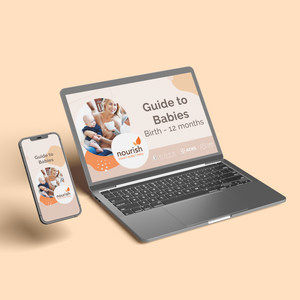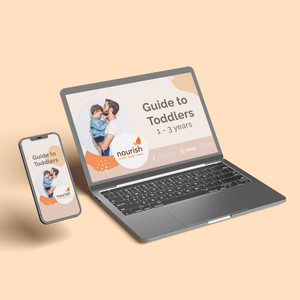Key Points:
- Divided into three trimesters, each crucial for supporting the baby's development towards independent life.
- Varied changes include a growing tummy, breast alterations, gait and mobility changes, swelling, pigmentation shifts, varicose veins, haemorrhoids, urinary frequency, stretch marks, skin and nail changes, weight gain, mood swings, and sleep disturbances.
Pregnancy is divided into three trimesters – the first, second and third. Each one lasts for three months and is equally as important as the other two. Every age and stage of pregnancy has its own role in supporting the growing baby towards independent life.
Changes to a Mother’s Body
Getting a bigger tummy is only a part of the journey that is pregnancy. And although it’s one of the more obvious signs, it’s important not to let this become the major focus.
Emotional changes as well as physical ones take place, for both a mother and her partner.

Expectant Couples Often Think About
- Their own childhoods. Whether they’d like their baby to have a similar or different upbringing.
- The transition from a couple to becoming a family.
- A growing sense of security and safety.
- What sort of parents they want to be.
- Expectant couples often make budget and saving changes.
- Their careers and taking time out to raise a family.
Physical Changes due to Pregnancy
- Growing tummy.
- Larger breasts and nipple changes.
- Changes in gait and mobility.
- Swollen feet and ankles.
- Pigment changes in the face. This is known as chloasma or the “mask of pregnancy”.
- Varicose veins in the legs and sometimes, the vulva.
- Haemorrhoids, constipation and bowel changes.
- Urinary frequency. This tends to peak in the first and last trimesters.
- Stretch marks on the breasts, tummy and upper thighs.
- General skin and nail changes.
- Weight gain. Current evidence recommends mothers use their pre pregnancy Body Mass Index (BMI) as a guide to healthy weight gain in pregnancy.
- Mood changes. Increased frustration, less even-tempered and prone to crying.
- Sleep changes. Getting comfortable becomes a major issue.

Early Pregnancy Symptoms
In the First Trimester
- Morning sickness. General feelings of nausea which progress to vomiting can happen at any time of the day.
- Urinary frequency.
- Feeling slightly dizzy and light headed.
- Being very tired, exhausted and generally fatigued.
- Food aversions and appetite changes.
- Breast and nipple tenderness.
- Just feeling “different” but not sure in what way. Some women say they can tell they are pregnant almost immediately after conception.
- Odd taste in the mouth. Sometimes this is described as a “metallic”.
- Heightened sense of smell and taste.
- Feeling emotional, weepy and just not too stable.
- Constipation.
- Light vaginal bleeding.
- Abdominal heaviness or cramping.
First Trimester Changes
Are generally related to conception and high levels of hormones. From a biological perspective, the first trimester is all about:
- Ensuring the mother’s body supports the embryo. From there all else will follow.
- The embryo growing and fully forming.
Some women experience every early pregnancy sign there is, with only a lucky few sailing through their first trimester not feeling very different to how they usually do.
Some will experience the same or similar first trimester symptoms right through their pregnancy. Others will wake up, quite literally on the day they progress between trimesters and feel very different.
Growth and Development – First Trimester
The first trimester is all about the baby forming. Cell division is incredibly rapid and although you won’t be aware of much that’s going on, every hour of the day your baby is growing and changing.
It won’t be until around 12 week’s gestation that your uterus lifts up and out of your pelvis. This is when women who’ve had a baby before may start to “show”. A rounded bulge starts to appear between their navel and pubic bone and gradually, over the coming weeks continues to grow higher and rounder.
There is a big variation in abdominal size between women. First time mothers tend not to “show” as early as mothers who’ve had a baby before. This is because the abdominal muscles have stretched and don’t keep the uterus as firmly in place.
By around 20 weeks the top of the uterus is at the level of the mother’s navel and by 40 weeks is sitting just under the rib cage. Of course, tummy growth is much quicker with multiple pregnancies. In fact, one of the earliest signs of twin or triplet pregnancy is a large tummy for the number of week’s gestation.

Second Trimester
This is often described as the easiest, and most enjoyable of the three trimesters. It’s the time when the initial surprise of being pregnant has settled, nausea may have improved and the baby is not yet big enough to cause their mother too much physical discomfort.
The baby is steadily growing and laying down fat and muscle. They’re practicing movements, spending long periods sleeping and resting, and having all their needs catered for. The time will come when they need to live independently but this is still months away.
You’ll have your screening ultrasound at around 18-20 weeks. Most parents look forward to this because it’s the first time they’ll really get to see their little baby. But it’s also a stressful time because complications, if present, may be diagnosed.
Third Trimester
- Lots of baby movements are obvious, sometimes through the mother’s clothing.
- Kicks and body rolls, hiccoughs and big body movements can be seen as well as felt.
- Sharp and intense pain can sometimes be felt in the bladder region.
- Aching, heavy breasts which may leak colostrum.
- Feeling tired and weary.
- Having trouble focusing on anything but the baby and upcoming birth.
- Running to the toilet to wee, a lot...
- Constipation and haemorrhoids.
- Aching legs and more swelling. Enclosed shoes may not fit.
- General difficulty in getting around.
- Hard to take a deep breath. This is because the mother’s lungs are compressed by her large uterus.
- Carpal tunnel syndrome in the wrists.
- “Nesting” and wanting to get the house and nursery ready for the new baby.
- Thinking about the upcoming birth and baby.
- Braxton Hicks contractions (gentle tightening of the uterus that lasts about 30 seconds).
- A sense of just having had enough and wanting the baby to be born.
About the Author:
Jane has qualifications in general, paediatric, immunisation, midwifery and child health nursing. She holds a Bachelor Degree in Applied Science (Nursing) and has almost 30 years specialist experience in child health nursing. She is a member of a number of professionally affiliated organisations including AHPRA, The Australasian Medical Writer’s Association, Health Writer Hub and Australian College of Children and Young People’s Nurses.
Our Products
-

01. Guide to a Healthy Pregnancy
$55 -

02. Positive Birthing Course
$55 -

03. Infant Feeding Guide
$55 -

04. Baby Sleep Guide - First 12 Months
$55 -

05. Toddler Parenting Course 1 - 3 Years
$55
-
 When to Start Antenatal Classes?
When to Start Antenatal Classes?
Becoming a parent is an incredible milestone, but it comes with a host of changes that can be daunting, especially for first time parents. Antenatal classes are all about offering expectant parents the education they need to make informed decisions, look after their bodies and care for their newborn babies. While you probably already have a long list of things you need to accomplish during your pregnancy, it’s a good idea to make time to attend antenatal classes.
-
 Development Milestones 4-8 Months
Development Milestones 4-8 Months
As they reach the middle of their first year, you'll start to see bigger leaps in their growth and ability!
In this article, we’re going to discuss your baby’s developmental milestones between 4-8 months, and what you can expect along the way.






 When to Start Antenatal Classes?
When to Start Antenatal Classes?
 Development Milestones 4-8 Months
Development Milestones 4-8 Months








